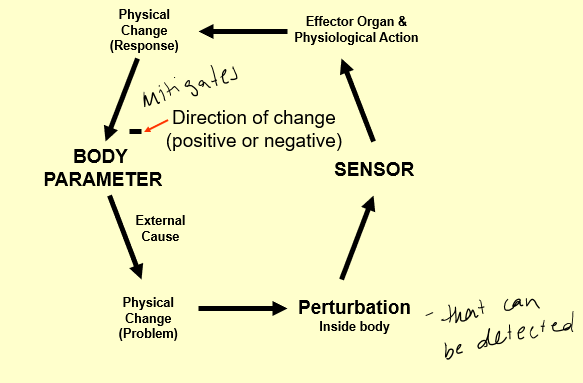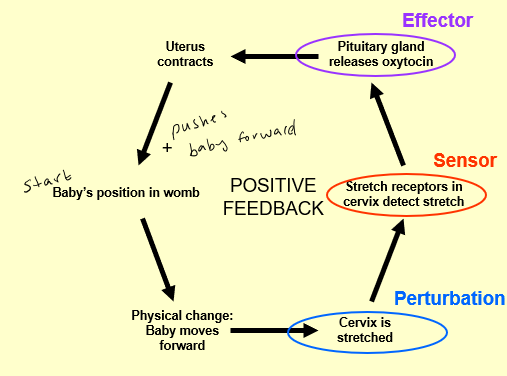T1 L2 Introduction to Physiology
1/22
There's no tags or description
Looks like no tags are added yet.
Name | Mastery | Learn | Test | Matching | Spaced |
|---|
No study sessions yet.
23 Terms
What is physiology
study of bodily function and systems by approaching the problem with measurements from physics and chemistry
branches of physiology
systems physiology (cardiovascular, gastrointestinal, neuro etc)
Animal physiology, human physiology, comparative physiology
Applied physiology
General physiology (e.g. cell physiology)
systems
= a set of things working together as parts of a mechanism or an interconnecting network; a complex whole
what does systems include
organised responses from challenge states towards a target- homeosasis
states e.g awake and asleep
complex
feedback mechanisms to maintain/achieve targets
physiological
normal function in the body of salts/electrocytes
non-physiological definitions
pathological= abnormal function in the body
events only possible in a laboratory -outside the body
the body but not in relation to function- structure= anatomy
normal function in the body of enzymes or antibodies
areas of medicine physiology is important in
anaesthetics
heart
lungs
kidney
what does physiology provide medicine with
the basis of therapeutics (pharmacotherapy)
the basis of anaesthetics and patient monitoring during surgery
pathophysiology
the mechanism by which a disease process causes the organ to fail
pathophysiology in type 1 diabetes mellitus
autoimmune destruction of beta cells —> insufficient insulin —> hyperglycaemia over time —> excess glucose in blood leads to inability of kidney to reabsorb glucose —> glucose in urine (sign) + excess fluid in urine —> less glucose = weight loss, hunger, thirst and fatigue (symptoms)
four types of functional tissue
muscle: drives movement and shape changes e.g cardiac muscle etc
nervous: communicates signals rapidly e.g brain
epithelial: controls transport and fluids, forms barrier protection e.g GI lining
connective: supports, protects and repairs structure and shape e.g RBC and bone
example of pressure
expansion of lung: thoracic wall expanding causes negative pressure between pleural membranes
pneumothorax: when lung doesn’t expand- air or gas in pleural cavity = no lung expansion
example of force
heart and filling: starling’s law- as heart stretches, more it wants to contract harder- with greater force
dilated cardiomyopathy: The ventricular cavity expands so much that blood doesn't stretch cells in diastole. Starling's law doesn't occur (stretch=more pump), so insufficient pumping force won't pump enough blood
ECG
Electrocardiogram
Example of electricity
ECG: measures the electrical field given off by all the heart muscle cells acting in synchrony- shows if having a heart attack (acute myocardial infarct- shown by ST elevation)
physiological signs
heart/pulse rate
blood pressure
respiratory rate
temperature
oxygen saturation (97%)
urine production
confusion/ mental status
pain (is a symptom not a sign)
excitable tissue vs non-excitable tissue
excitable: muscle and nervous tissue
non-excitable: epithelial and connective tissue
homeostasis
regulation of the cell’s or the body’s internal environment so that it tends to maintain a stable, constant condition
negative and positive feedback
about 1014 cells
parts of a feedback loop

perturbation
a change that the body actually detects
negative feedback: general principles with examples
stability or set point: thermoregulation
opposing influences: insulin and glucagon
sensors: baroreceptors (in aortic arch and carotid sinus)
positive feedback

positive feedback: general principles with examples
amplification: lactation to suckling and vice versa
all-or-none: parturition (giving birth)
2 stages consisting of extrinsic (initiate) and intrinsic (amplify): action potential and depolarisation